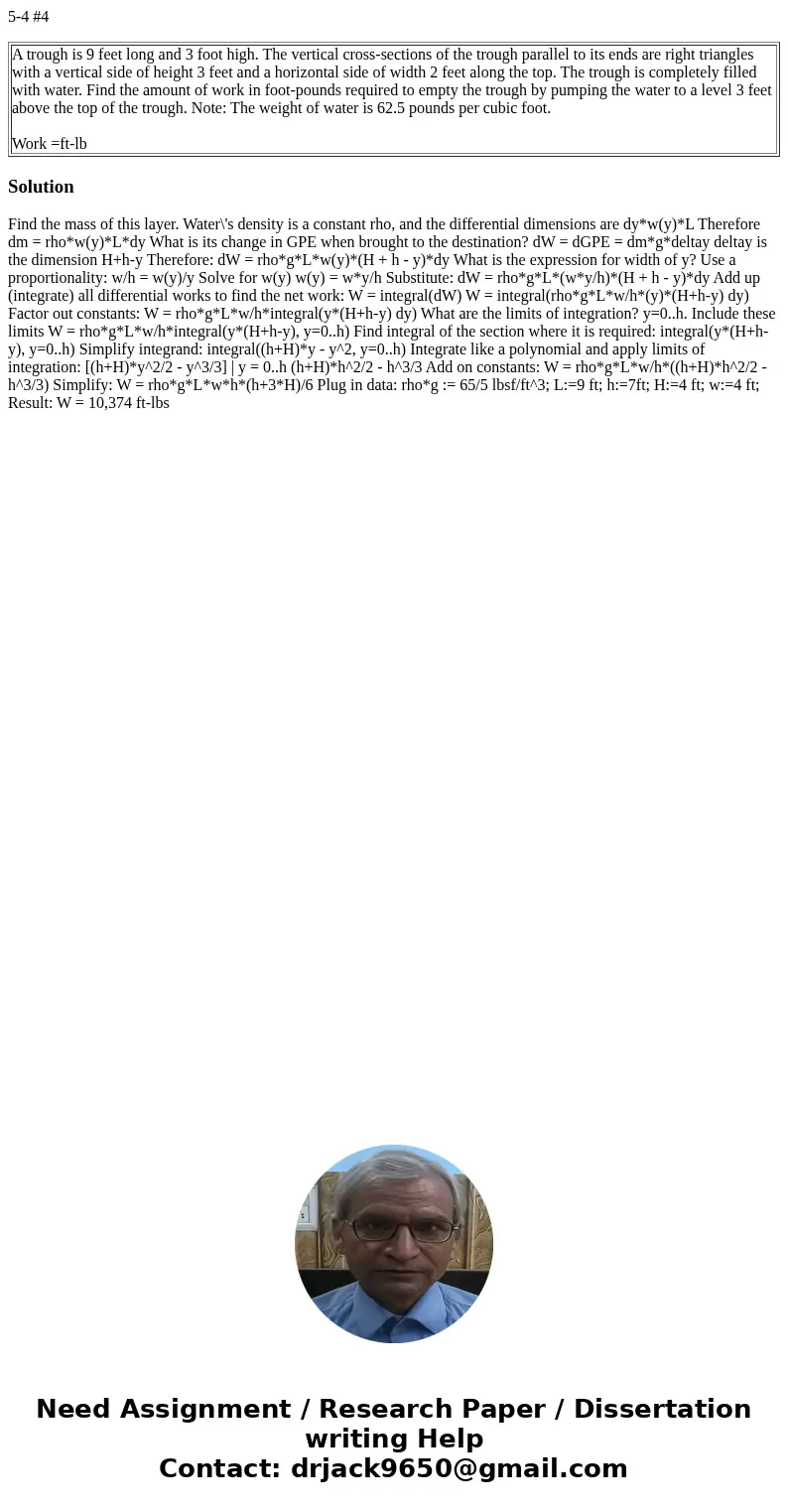54 4 A trough is 9 feet long and 3 foot high The vertical cr
5-4 #4
| A trough is 9 feet long and 3 foot high. The vertical cross-sections of the trough parallel to its ends are right triangles with a vertical side of height 3 feet and a horizontal side of width 2 feet along the top. The trough is completely filled with water. Find the amount of work in foot-pounds required to empty the trough by pumping the water to a level 3 feet above the top of the trough. Note: The weight of water is 62.5 pounds per cubic foot. Work =ft-lb |
Solution
Find the mass of this layer. Water\'s density is a constant rho, and the differential dimensions are dy*w(y)*L Therefore dm = rho*w(y)*L*dy What is its change in GPE when brought to the destination? dW = dGPE = dm*g*deltay deltay is the dimension H+h-y Therefore: dW = rho*g*L*w(y)*(H + h - y)*dy What is the expression for width of y? Use a proportionality: w/h = w(y)/y Solve for w(y) w(y) = w*y/h Substitute: dW = rho*g*L*(w*y/h)*(H + h - y)*dy Add up (integrate) all differential works to find the net work: W = integral(dW) W = integral(rho*g*L*w/h*(y)*(H+h-y) dy) Factor out constants: W = rho*g*L*w/h*integral(y*(H+h-y) dy) What are the limits of integration? y=0..h. Include these limits W = rho*g*L*w/h*integral(y*(H+h-y), y=0..h) Find integral of the section where it is required: integral(y*(H+h-y), y=0..h) Simplify integrand: integral((h+H)*y - y^2, y=0..h) Integrate like a polynomial and apply limits of integration: [(h+H)*y^2/2 - y^3/3] | y = 0..h (h+H)*h^2/2 - h^3/3 Add on constants: W = rho*g*L*w/h*((h+H)*h^2/2 - h^3/3) Simplify: W = rho*g*L*w*h*(h+3*H)/6 Plug in data: rho*g := 65/5 lbsf/ft^3; L:=9 ft; h:=7ft; H:=4 ft; w:=4 ft; Result: W = 10,374 ft-lbs
 Homework Sourse
Homework Sourse